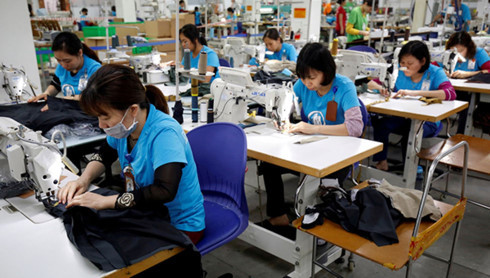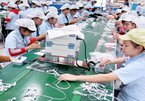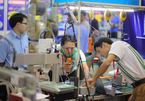 |
Countries where existing infrastructure and production networks are already in place such as Vietnam are likely to be the main beneficiaries of a shift in production capacity as businesses look to Southeast Asia as an emerging manufacturing hub, but there is much to be done to fully capture a large-scale move, HSBC has said in a note.
Shift in supply chains
There have been supply chains shifting to Southeast Asia because of the region’s growing economies and consumer markets, especially with trade tensions and rising production costs affecting other markets.
Rather than see a wide-scale shift to ASEAN, due to trade tensions, multinationals are diverging in their supply chain strategies with a mixture of localization, offshoring and re-shoring activity emerging.
As China moves up the technological curve, its lower-value production is shifting to lower-cost markets. For example, China-based Guizhou Tyres has expanded plans for its previously announced tyre plant in Vietnam increasing the budget investment to nearly $500 million.
Similarly, Samsung has shifted more of their electronic equipment production to Vietnam as now the Korean conglomerate assembles about half of its phones in the country.
Meanwhile, across Europe, firms like British manufacturer, Dyson, are forging ahead with South-east Asian investment to cater for the local consumer market whilst retaining existing production facilities for exports elsewhere.
Changes needed
“Shifts in supply chains have been a multi-year phenomenon due to structural changes in production technology, labor costs and emerging consumer markets.
Over the past decade, ASEAN and Vietnam have been perceived as a strong production option for multinationals given its role within existing supply chains, growing consumer base, and strong trade and investment ties,” said CEO of HSBC Vietnam Pham Hong Ha.
However, Southeast Asia, and particularly Vietnam, can only expect to see a wide-scale divergence of supply chains coming its way when there are improvements in production technology and capacity, and regional integration, according to HSBC.
Businesses from China, Europe and the US want to see ASEAN and Vietnam further position itself as a viable alternative for lower-end production.
However, to convert its much-touted supply chain potential, Vietnam needs to build more visibility and credibility amongst international firms, particularly in their ability to handle and deliver production orders, Hai noted.
“The changes in global trade are causing businesses to re-visit their supply chain investment and capacity strategies, but we are yet to see this convert into wide-scale shifts to Southeast Asia, South Asia or other parts of the world. The changes cannot happen overnight. Businesses that consider shifting supply chains have to ask themselves many questions about local capacity available, skilled employees and consideration of building new facilities or start partnerships with existing local players,” Hai added.
The hot buttons that will matter for both large and small firms include how ASEAN and Vietnam can deliver competitive production costs, and how technology and innovation are being introduced to improve productivity.
It will also come down to the relationship factor and whether businesses feel confident that orders will be serviced on time and on budget.
At a government level, this will require educating international firms about the regulatory frameworks, tax incentives, and free trade zones, along with demonstrating the improvements in ports and rail and other transport infrastructure.
It will also require ASEAN governments to demonstrate a pathway to longer-term initiatives to remove the non-tariff barriers around the flow of goods across ASEAN, the development of skilled labor; and the protection of intellectual property, cybersecurity, and movement of commercial data across borders.
HSBC suggest a number of areas of specific focus to improve intra-ASEAN trade flow, including improvement in ASEAN’s transport infrastructure including roads, rail and ports; policies that raise the level of technological adoption; increasing skilled labor and the flow of skilled labor; establishing automation of customs clearance across all ASEAN member states, among others.
Reducing supply chain barriers of this nature could increase Southeast Asia’s gross domestic product by 9.3% and exports by 12.1%, according to the World Economic Forum.
“While trade relations between ASEAN including Vietnam and the world’s major economies, like US and China, have generally been positive and steadily growing, there is a lot of ground still to cover within ASEAN’s backyard to further improve the intra-regional flow of trade and investment. Agility and responsiveness to these challenges by ASEAN governments and corporates will determine whether the region's supply chain potential can be realized amongst international firms who are re-examining their options,” Hai concluded. Hanoitimes
Anh Minh

Production shift from China benefits Vietnam’s industrial market: CBRE
Looking at the remainder of this year and 2020, property service provider CBRE Vietnam has forecast an increase in industrial supply across Vietnam, benefitting from the production shift away from China.

Warren Buffet-owned Brooks Running moves production from China to Vietnam
Vietnam is emerging as a preferred destination for companies looking to resettle production because of tariff concerns emerged from the US – China trade friction.

Massive production relocation from China to Vietnam spikes surge in labor demand
China was the largest source of greenfield Investment in Vietnam in Q1/2019 with US$732.2 million, accounting for 18.9% of the total.
 However, to convert its much-touted supply chain potential, Vietnam needs to build more visibility and credibility amongst international firms.
However, to convert its much-touted supply chain potential, Vietnam needs to build more visibility and credibility amongst international firms.